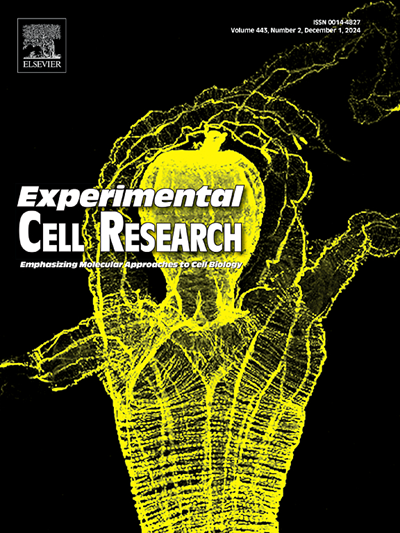神经-2a 细胞系在极端压力下的细胞恢复能力和存活率
IF 3.5
3区 生物学
Q3 CELL BIOLOGY
引用次数: 0
摘要
这项研究调查了神经-2a(N2a)细胞在低温储存失败后的存活和恢复情况,低温储存失败使这些细胞暴露在极端应激条件下,如缺氧、低体温和急性中毒。值得注意的是,一小部分细胞存活下来并最终恢复。为了了解潜在的恢复机制,我们创建了一个模型来复制脱水失败事件,并研究了存活细胞在恢复过程中表型、转录组学、蛋白质组学和线粒体活性的变化。结果发现,存活的细胞最初表现出受压形态,细胞膜不规则,细胞聚集。在应激事件发生后不久,它们显示出与DNA修复和染色质修饰途径相关的蛋白质表达增加,线粒体功能增强。随着恢复的进行,这些应激反应途径和线粒体活性趋于正常,表明已恢复到稳定状态。这些研究结果表明,最初强大的能量状态支持关键的应激反应途径,有利于细胞在极端应激后存活和恢复。这项工作为了解细胞恢复机制提供了宝贵的见解,对改善生物医学应用中的细胞保存和恢复,以及针对涉及细胞损伤和应激的病症制定治疗策略具有潜在的意义。本文章由计算机程序翻译,如有差异,请以英文原文为准。
Cellular resiliency and survival of Neuro-2a cells under extreme stress
Stressors such as hypoxia, hypothermia, and acute toxicity often result in widespread cell death. This study investigated the outcomes of Neuro-2a (N2a; mouse neuroblastoma) cells following a cryogenic storage failure that exposed them to a combination of these stressors over a period of approximately 24-30 hours. Remarkably, a small fraction of the cells survived the event, underwent a period of dormancy, and eventually recovered to a healthy state. To understand the underlying resilience mechanisms, we created a model to replicate the dewar failure event and examined changes in phenotype, transcriptomics, proteomics, and mitochondrial activity of the surviving cells during recovery. We found that the surviving cells initially displayed a stressed morphology with irregular membranes and a clustered apperance. They showed an increased expression of proteins related to DNA repair and chromatin modification pathways as well as heightened mitochondrial function shortly after the stress event. As recovery progressed, the stress-responsive pathways, mitochondrial activity, and growth rates normalized toward that of healthy controls, indicating a return to a stable baseline state. These findings suggest that an initial robust energetic state supports key stress-responsive and repair pathways at the early stages of recovery, facilitating cell survival and resiliency after extreme stress. This work provides valuable insights into cellular resilience mechanisms with potential implications for improving cell preservation and recovery in biomedical applications and developing therapeutic strategies for conditions involving cell damage and stress.
求助全文
通过发布文献求助,成功后即可免费获取论文全文。
去求助
来源期刊

Experimental cell research
医学-细胞生物学
CiteScore
7.20
自引率
0.00%
发文量
295
审稿时长
30 days
期刊介绍:
Our scope includes but is not limited to areas such as: Chromosome biology; Chromatin and epigenetics; DNA repair; Gene regulation; Nuclear import-export; RNA processing; Non-coding RNAs; Organelle biology; The cytoskeleton; Intracellular trafficking; Cell-cell and cell-matrix interactions; Cell motility and migration; Cell proliferation; Cellular differentiation; Signal transduction; Programmed cell death.
 求助内容:
求助内容: 应助结果提醒方式:
应助结果提醒方式:


